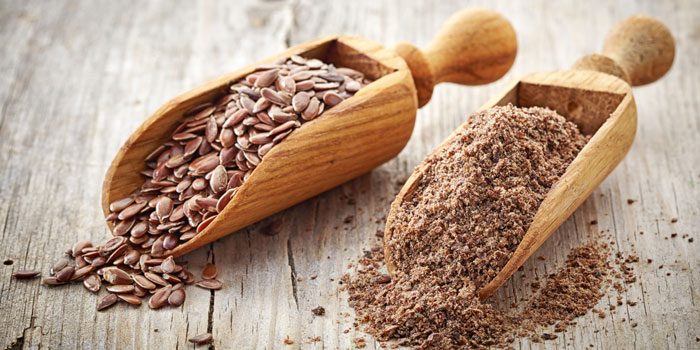Linseed, often overshadowed by more popular seeds like chia or sesame, is a true powerhouse of nutrition. These tiny brown or golden seeds pack a punch when it comes to health benefits and versatility. Whether you’re looking to boost your diet with essential nutrients or explore natural skincare options, linseed could be your new best friend. With roots tracing back thousands of years, this ancient superfood has much to offer in today’s wellness landscape. Let’s dive into everything you need to know about linseed—its nutritional offerings, health advantages, and creative ways to incorporate it into your daily routine!
Nutritional Benefits of Linseed
Linseed, often known as flaxseed, is a powerhouse of nutrition. Packed with essential fatty acids, particularly omega-3s, it plays a crucial role in heart health.
These tiny seeds are also rich in dietary fiber. This aids digestion and promotes a healthy gut. A single serving can provide significant daily fiber needs.
In addition to fiber and healthy fats, linseeds contain lignans—plant compounds that have antioxidant properties. These help combat oxidative stress in the body.
Vitamins and minerals are abundant too. Linseed offers magnesium, phosphorus, and B vitamins that support various bodily functions.
Moreover, these seeds contribute protein content to your diet. They are an excellent choice for vegetarians seeking alternative protein sources without compromising on nutrition.
Including linseed in your meals not only elevates flavors but also amplifies nutritional benefits remarkably.
Health Benefits of Consuming Linseed
Consuming linseed can significantly impact your health in various ways. Rich in omega-3 fatty acids, these tiny seeds help combat inflammation and support heart health. Regular intake can lower cholesterol levels and improve overall cardiovascular function.
Linseed is also known for its high fiber content, which aids digestion. Including it in your meals can promote regular bowel movements and create a feeling of fullness, making it easier to manage weight.
Antioxidants found in linseed protect your cells from oxidative stress. This can lead to improved skin appearance and reduced signs of aging.
Moreover, studies suggest that linseed may play a role in reducing the risk of certain cancers, particularly breast cancer. Its lignans are thought to have protective properties against hormone-related cancers.
Incorporating linseed into your diet could be an easy way to enhance your nutrition while reaping numerous health benefits.
Different Ways to Incorporate Linseed into Your Diet
Adding linseed to your diet is both simple and delicious. You can sprinkle ground linseed on your morning oatmeal or yogurt for a nutritious boost. Its nutty flavor pairs well with various breakfast options.
For lunch, consider mixing linseed into salads or smoothies. It blends seamlessly while enhancing the texture. Linseed oil can be drizzled over veggies or used as a dressing base.
Baking is another great avenue for incorporating this ingredient. Substitute some flour in recipes like muffins, pancakes, or bread with ground linseed to enrich their nutritional value.
Don’t forget about snacks! Combine roasted nuts with linseeds for an energizing trail mix that keeps you satisfied throughout the day.
With so many ways to enjoy it, integrating linseed into daily meals is effortless and rewarding.
How to Use Linseed for Skincare
Linseed, often called flaxseed, is not just for your diet; it’s a treasure trove for skincare too. Its oil is rich in omega-3 fatty acids, which help nourish and hydrate the skin.
To create a soothing face mask, mix ground linseed with yogurt or honey. Apply it to your face and let it sit for about 15 minutes before rinsing off. This blend can provide moisture and brighten your complexion.
You can also use linseed oil as a natural moisturizer. A few drops massaged into damp skin can lock in hydration and leave you with a glowing finish.
For an exfoliating scrub, combine ground linseed with brown sugar or oatmeal. Gently massage onto wet skin to remove dead cells while benefiting from its nourishing properties.
Incorporating linseed into your skincare routine offers both nourishment and rejuvenation without harsh chemicals.
Other Uses and Applications of Linseed
Linseed is more than just a dietary staple. Its versatility extends into various industries, showcasing its multifaceted nature.
In the realm of textiles, linseed oil serves as a natural lubricant and provides moisture resistance in fabrics. This makes it an excellent choice for environmentally conscious manufacturers.
Artists also appreciate linseed oil for its role in paint production. It enhances color depth and improves the drying time of oil paints, making it a favorite among painters.
Additionally, linseed finds application in wood finishing products. It acts as a protective agent that guards against moisture while enriching the wood’s natural beauty.
For those invested in eco-friendly practices, linseed can even be used to create biodegradable plastics. This innovation presents sustainable alternatives to traditional plastic materials.
With such diverse uses, linseed continues to inspire creativity across multiple fields beyond nutrition and health benefits.
Precautions and Side Effects of Linseed
While linseed offers numerous benefits, it’s essential to approach its consumption with care. Some individuals may experience digestive discomfort when consuming high amounts of linseed. This can include bloating or diarrhea.
Linseed is known for its high fiber content, which can be beneficial in moderation. However, sudden increases in fiber intake should be avoided to prevent gastrointestinal issues.
Pregnant and breastfeeding women should consult a healthcare provider before adding linseed to their diet. There might be potential hormonal effects due to the phytoestrogens present.
Also, people on blood-thinning medications need to exercise caution as linseed has anticoagulant properties that could amplify the effects of these drugs.
Always store linseed properly to prevent rancidity. Exposure to light and air can degrade the quality of this nutrient-rich seed over time.
Conclusion
Linseed, often overlooked in the realm of superfoods, deserves a prominent place on your table. Its rich nutritional profile not only supports overall health but also offers myriad benefits for skin care and wellness. By incorporating linseed into your diet through various creative methods, you can enhance your meals while reaping its numerous advantages.
Beyond nutrition, linseed’s versatility extends to skincare applications that can promote healthy skin and combat signs of aging. Additionally, this humble seed finds use in other industries such as textiles and biofuels, showcasing its broad appeal.
However, it’s essential to be mindful of potential side effects and precautions when consuming linseed. This ensures that you harness its power safely and effectively. Whether you’re sprinkling it over breakfast or using it in beauty routines, integrating linseed could be a transformative addition to your lifestyle.
Embrace the unique qualities of linseed today; let this nutrient-dense seed enrich both your health regimen and daily life!


